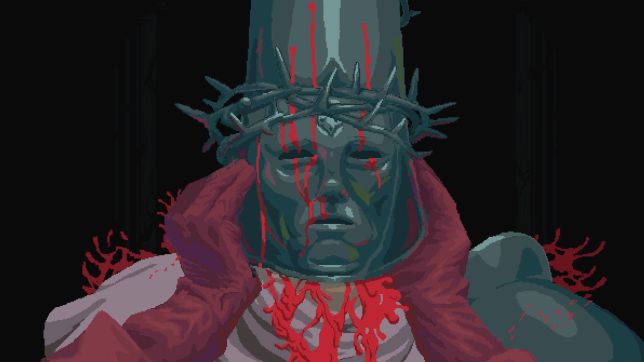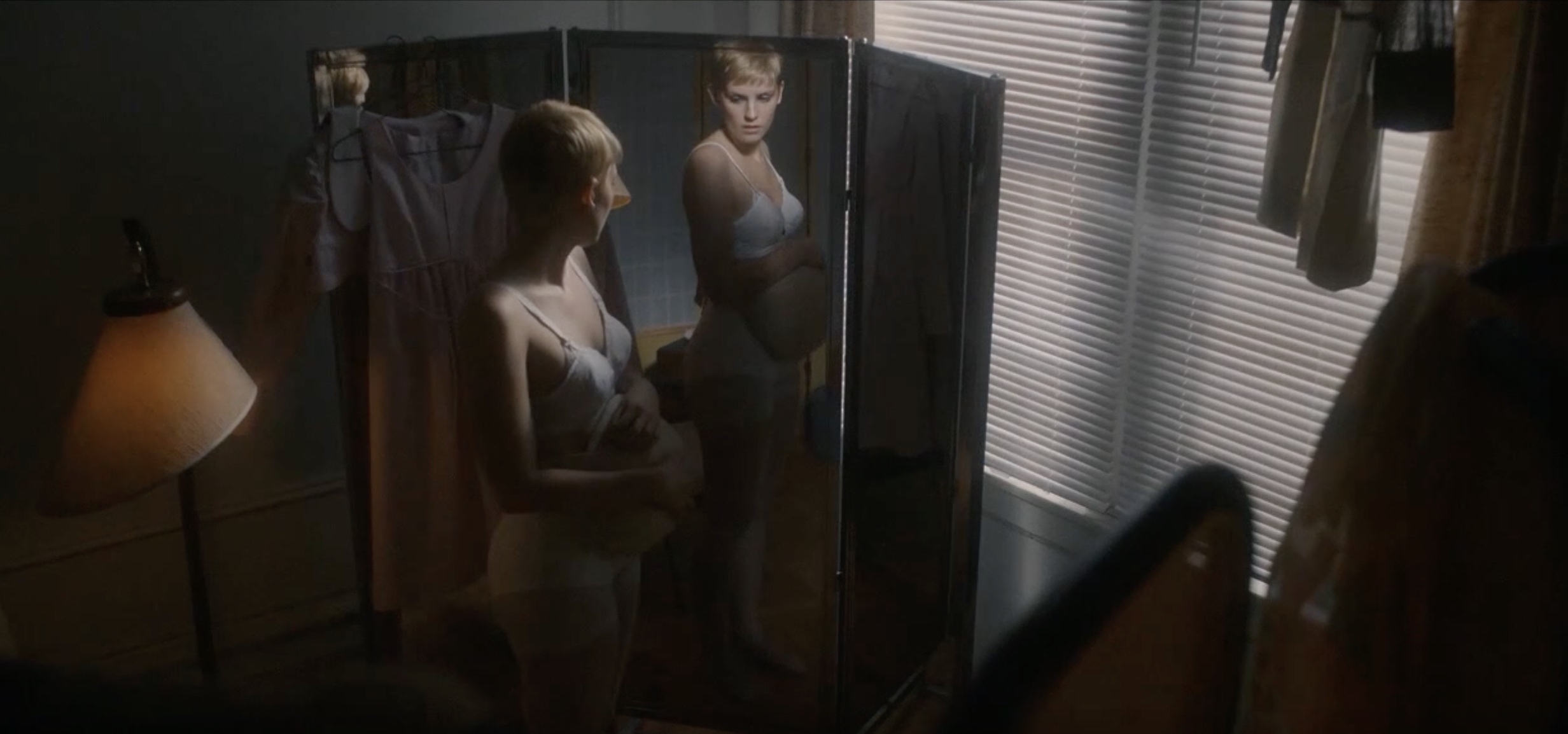Reviews
[Review] Exploring the Gorgeous Hellscapes of ‘Blasphemous’

From Demon’s Souls to Sekiro, From Software has managed to carve out an incredible niche for themselves over the years. While a fair share of competitors and imitators have risen to challenge their throne, few have managed to capture the magic of their hyper-challenging yet insanely addictive adventures. Nevertheless, The Game Kitchen, a Spain-based indie studio, has managed to successfully combine the unique thrills of a Souls game with traditional Metroidvania mechanics. The end result of this unholy concoction is Blasphemous, one of the most engaging 2D gaming experiences we’ve seen in years.
On the surface, Blasphemous is an action-platformer where you play as the Penitent One, a tortured soul embarking on a divine journey through a faraway land devastated by a supernatural cataclysm known only as “The Miracle”. During this ecclesiastic quest, you’ll be faced with unimaginable horrors that would make Clive Barker squeal with glee, all the while navigating deceptively simple levels that are soon revealed to be part of a sprawling, interconnected maze of unique biomes and challenges.
Of course, this is one hell of a stunning labyrinth, with gorgeous pixel art depicting a nightmare-inducing world where faith has gone terribly wrong and suffering has become the norm. Thus, death will be exceedingly common during your journey, though it won’t be permanent. When you’re inevitably defeated, you’ll be returned to the last shrine you prayed at, leaving behind “guilt” at the spot where you died. Accumulating guilt reduces your maximum fervor (the game’s equivalent to mana), but it can be recovered either through backtracking to the location of your demise or paying a fee at certain holy locations (unless you’re trying for the true ending, which is a whole other matter).

Most of the gameplay here comprises of platforming and simple swordplay (with the parry button soon to become your best friend), but there are several prayers that allow for increasingly useful magical abilities, not to mention relics and rosary beads that concede buffs and new possibilities for traversing these cursed lands. There are also several upgrades for Mea Culpa, the Penitent One’s trusty sword. However, acquiring all of these unlockables relies less on accumulating Tears of Atonement, the game’s currency, and more on finding hidden areas and items scattered throughout the map.
The lack of handholding and focus on exploration may seem frustrating at times, but they make this one hell of an addicting experience as you set off on this gruesome adventure on your own terms. Nevertheless, Blasphemous‘ commitment to the Spanish Catholicism-inspired visuals is where the game really shines. The unique art style makes for extremely memorable levels, and every little detail, from the item descriptions to the gorgeous pixel-art cutscenes, help to immerse the player in this deranged world where spirituality has gone off the deep end.
In fact, like the Souls games, most of the story is inferred through item descriptions and subtext rather than being directly told to the player. This results in a loose narrative that relies heavily on individual interpretation (and online forum discussions). This approach might not be for everyone, but it works within the confines of the gameplay.
With the exception of some of the later boss battles, Blasphemous miraculously reaches a perfect balance of difficulty and satisfaction. Most challenges require only patient observation in order to guarantee victory, and even then, there are certain items that can help impatient players get by as well. Unfortunately, there are a few bugs that can make things harder than they have to be (such as leaving guilt behind in unreachable areas and certain evens not triggering properly), and some essential areas/items are also way too easy to miss. These issues become way more prevalent towards the end of the game, which is a huge shame, though I admit that I never stopped having fun, even as I was forced to backtrack to the very beginning of the game to find a miniscule passageway that I had previously missed.

Overall, I’d say Blasphemous is a must-play if you’re a fan of Souls-like adventuring, classic Metroidvania or if you just want to set off on a dark pilgrimage to unholy lands. There may be a few issues that hinder the experience here and there (some of which are supposedly being patched as we speak), but this is still one of my favorite gaming experiences of 2019, and I think horror fans will especially appreciate the work that went into crafting this terrifying world.
Blasphemous is available now on Steam, the Xbox Games Store and PSN!

Reviews
“AHS: Delicate” Review – “Little Gold Man” Mixes Oscar Fever & Baby Fever into the Perfect Product

‘AHS: Delicate’ enters early labor with a fun, frenzied episode that finds the perfect tone and goes for broke as its water breaks.
“I’ll figure it out. Women always do.”
American Horror Story is no stranger to remixing real-life history with ludicrous, heightened Murphy-isms, whether it’s AHS: 1984’s incorporation of Richard Ramirez, AHS: Cult’s use of Valerie Solanas, or AHS: Coven’s prominent role for the Axeman of New Orleans. Accordingly, it’s very much par for the course for AHS: Delicate to riff on other pop culture touchstones and infinitely warp them to its wicked whims. That being said, it takes real guts to do a postmodern feminist version of Rosemary’s Baby and then actually put Mia Farrow – while she’s filming Rosemary’s Baby, no less – into the narrative. This is the type of gonzo bullshit that I want out of American Horror Story! Sharon Tate even shows up for a minute because why the hell not? Make no mistake, this is completely absurd, but the right kind of campy absurdity that’s consistently been in American Horror Story’s wheelhouse since its inception. It’s a wild introduction that sets up an Oscar-centric AHS: Delicate episode for success. “Little Gold Man” is a chaotic episode that’s worth its weight in gold and starts to bring this contentious season home.
It’d be one thing if “Little Gold Man” just featured a brief detour to 1967 so that this season of pregnancy horror could cross off Rosemary’s Baby from its checklist. AHS: Delicate gets more ambitious with its revisionist history and goes so far as to say that Mia Farrow and Anna Victoria Alcott are similarly plagued. “Little Gold Man” intentionally gives Frank Sinatra dialogue that’s basically verbatim from Dex Harding Sr., which indicates that this demonic curse has been ruffling Hollywood’s feathers for the better part of a century. Anna Victoria Alcott’s Oscar-nominated feature film, The Auteur, is evidently no different than Rosemary’s Baby. It’s merely Satanic forces’ latest attempt to cultivate the “perfect product.” “Little Gold Man” even implies that the only reason that Mia Farrow didn’t go on to make waves at the 1969 Academy Awards and ends up with her twisted lot in life is because she couldn’t properly commit to Siobhan’s scheme, unlike Anna.
This is easily one of American Horror Story’s more ridiculous cold opens, but there’s a lot of love for the horror genre and Hollywood that pumps through its veins. If Hollywood needs to be a part of AHS: Delicate’s story then this is actually the perfect connective tissue. On that note, Claire DeJean plays Sharon Tate in “Little Gold Man” and does fine work with the brief scene. However, it would have been a nice, subtle nod of continuity if AHS: Delicate brought back Rachel Roberts who previously portrayed Tate in AHS: Cult. “Little Gold Man” still makes its point and to echo a famous line from Jennifer Lynch’s father’s television masterpiece: “It is happening again.”
“Little Gold Man” is rich in sequences where Anna just rides the waves of success and enjoys her blossoming fame. She feels empowered and begins to finally take control of her life, rather than let it push her around and get under her skin like a gestating fetus. Anna’s success coincides with a colossal exposition dump from Tavi Gevinson’s Cora, a character who’s been absent for so long that we were all seemingly meant to forget that she was ever someone who was supposed to be significant. Cora has apparently been the one pulling many of Anna’s strings all along as she goes Single White Female, rather than Anna having a case of Repulsion. It’s an explanation that oddly works and feeds into the episode’s more general message of dreams becoming nightmares. Cora continuing to stay aligned with Dr. Hill because she has student loans is also somehow, tragically the perfect explanation for her abhorrent behavior. It’s not the most outlandish series of events in an episode that also briefly gives Anna alligator legs and makes Emma Roberts and Kim Kardashian kiss.

“Little Gold Man” often feels like it hits the fast-forward button as it delivers more answers, much in the same vein as last week’s “Ava Hestia.” These episodes are two sides of the same coin and it’s surely no coincidence that they’re both directed by Jennifer Lynch. This season has benefitted from being entirely written by Halley Feiffer – a first for the series – but it’s unfortunate that Lynch couldn’t direct every episode of AHS: Delicate instead of just four out of nine entries. That’s not to say that a version of this season that was unilaterally directed by Lynch would have been without its issues. However, it’s likely that there’d be a better sense of synergy across the season with fewer redundancies. She’s responsible for the best episodes of AHS: Delicate and it’s a disappointment that she won’t be the one who closes the season out in next week’s finale.
To this point, “Little Gold Man” utilizes immaculate pacing that helps this episode breeze by. Anna’s Oscar nomination and the awards ceremony are in the same episode, whereas it feels like “Part 1” of the season would have spaced these events out over four or five episodes. This frenzied tempo works in “Little Gold Man’s” favor as AHS: Delicate speed-runs to its finish instead of getting lost in laborious plotting and unnecessary storytelling. This is how the entire season should have been. Although it’s also worth pointing out that this is by far the shortest episode of American Horror Story to date at only 34 minutes. It’s a shame that the season’s strongest entries have also been the ones with the least amount of content. There could have been a whole other act to “Little Gold Man,” or at the least, a substantially longer cold open that got more out of its Mia Farrow mayhem.
“Little Gold Man” is an American Horror Story episode that does everything right, but is still forced to contend with three-quarters of a subpar season. “Part 2” of AHS: Delicate actually helps the season’s first five episodes shine brighter in retrospect and this will definitely be a season that benefits from one long binge that doesn’t have a six-month break in the middle. Unfortunately, anyone who’s already watched it once will likely not feel compelled to experience these labor pains a second time over. With one episode to go and Anna’s potential demon offspring ready to greet the world, AHS: Delicate is poised to deliver one hell of a finale.
Although, to paraphrase Frank Sinatra, “How do you expect to be a good conclusion if this is what you’re chasing?”














You must be logged in to post a comment.